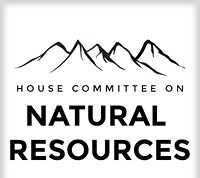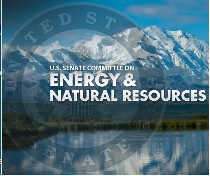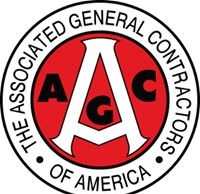FACT SHEET – Building a 21st Century Infrastructure: Modernizing Infrastructure Permitting
WASHINGTON, D.C. – May 15, 2014 – (RealEstateRama) — Building a 21st century infrastructure is a critical component of President Obama’s effort to accelerate economic growth, expand opportunity, and improve the competitiveness of the American economy.
With the Highway Trust Fund projected to run out of money before this fall, President Obama has laid out his vision for a long-term infrastructure bill that would provide certainty for our state and local partners, support millions of jobs, and position our economy for lasting growth. The President is calling on Congress to pass a robust multi-year transportation bill before funding runs out and puts hundreds of thousands of jobs at risk.
The President has also been clear that he is committed to making 2014 a year of action and that while he wants to work with Congress wherever they are willing, he will not hesitate to use his power as President to act on his own to promote American economic growth and opportunity.
That is why, as part of its commitment to ensuring America has a first-class transportation infrastructure, the Administration is taking action to modernize the federal infrastructure permitting process, cutting through red tape and getting more timely decisions, while protecting our communities and the environment. For projects that are approved, this means states, local and tribal governments, and private developers will be able to start construction sooner, create jobs earlier, and fix our nation’s infrastructure faster.
Over the past 3 years, federal agencies have worked to expedite the review and permitting of over 50 major infrastructure projects, including bridges, transit, railways, waterways, roads, and renewable energy projects, and over 30 of those projects have completed the permitting process. For example, federal agencies completed the permitting and review for the Tappan Zee Bridge in 1.5 years for a process that normally takes 3-5 years.
Today, the Administration is releasing a comprehensive plan to accelerate and expand permitting reform government-wide. The Administration’s plan adopts the best practices learned from the initial focus projects and calls on federal agencies to apply those practices going forward. By turning best practice into common practice, we can improve the efficiency and effectiveness of the federal permitting and review of all major infrastructure projects. These reforms include:
- Improving Interagency Coordination to Increase Decision Making Speed. Major infrastructure projects often require multiple permits and reviews from federal agencies and bureaus responsible for ensuring projects are built safely. To improve interagency coordination, the Administration will institutionalize best practices, including:
- Requiring early coordination with the identification of a lead agency for each project.
- Requiring a single coordinated project plan across all federal agencies.
- Strengthening dispute resolution mechanisms to quickly resolve conflicts and make sure that interagency disputes do not hold back valid projects or quick decision making.
- Synchronizing Reviews. Federal agencies will also be moving from separate, consecutive reviews to synchronized, simultaneous reviews. For example, the U.S. Coast Guard, the Army Corps of Engineers, and the Department of Transportation have launched a new partnership to synchronize their reviews for transportation projects. By developing one environmental analysis that satisfies all three agencies, project timelines can be significantly reduced.
- Driving Accountability and Transparency through the Online Permitting Dashboard. The Administration’sFederal Infrastructure Projects Permitting Dashboard supports coordination and synchronization of projects among federal agencies, and can also help create a more predictable process for project applicants. The Administration is expanding the Dashboard to include additional projects, as well as new capabilities to track project schedules and metrics, increasing overall accountability and transparency. As a first step, today we are adding 11 more Dashboard projects. Each project will have a lead agency, a coordinated project plan across all federal agencies, and public tracking of progress to ensure milestones are met. The Administration’s goal is for all major infrastructure projects to be included on the Dashboard to institutionalize and broaden the reach of this tool.
- Launching an Interagency Permitting Center to Institutionalize Reform. The Administration is standing up an interagency infrastructure permitting improvement center dedicated to implementing these reforms across agencies, as well as looking for new ways to modernize infrastructure permitting and reviews. The President’s 2015 Budget includes funding for the center and the expansion of the Permitting Dashboard.
This effort to modernize infrastructure permitting is part of the Administration’s broader commitment to increase investment in U.S. infrastructure, as well as the President’s Management Agenda, which is dedicated to driving efficiency within government, spurring economic growth, and unlocking the full potential of the federal workforce. The Administration has also recently released the GROW AMERICA Act, a four-year, $302 billion transportation plan to modernize our nation’s roads, bridges, and public transportation, spur economic growth, and allow states and localities to make sound multi-year investments. The GROW AMERICA Act includes reforms to further accelerate the approval and delivery of projects. Together these efforts will help create the transportation infrastructure we need for the 21st century.
Background:
Modernizing Infrastructure Permitting
As major infrastructure projects are proposed, federal, state, local, and tribal entities work to consider and minimize potential impacts on safety and security, and environmental and community resources such as air, water, land, and historical and cultural resources. For the majority of projects, these environmental review and permitting requirements are accomplished effectively and efficiently. However, for particularly large and complex infrastructure projects, multiple permits and approvals can lead inefficiencies and delay.
To begin addressing this challenge, the President issued a Presidential Memorandum on August 31, 2011 and an Executive Order on March 22, 2012 to add more transparency, accountability, and certainty into the permitting and review processes for major infrastructure projects. Since then, federal agencies have worked to expedite the review and permitting of over 50 major projects, including bridges, transit, railways, waterways, roads, and renewable energy projects; over 30 of those projects have now completed the permitting process. Progress on these projects is tracked publically through the Administration’s online Federal Infrastructure Projects Permitting Dashboard.
Building off this work on specific projects, agencies have identified a set of best practices for efficient review and permitting, ranging from expanding information technology (IT) tools to synchronizing reviews for improving collaboration. On May 17, 2013, the President issued a Presidential Memorandum charging an interagency Steering Committee with developing a plan to put these best practices to work in a systematic and permanent way across the government. The Steering Committee is comprised of 12 agencies including the Advisory Council on Historic Preservation (ACHP), Department of Agriculture (USDA), Department of the Army (USACE), Department of Commerce represented by National Oceanic and Atmospheric Administration (NOAA), Department of Defense (DOD), Department of Energy (DOE), Department of Homeland Security represented by the U.S Coast Guard (Coast Guard), Department of Housing and Urban Development (HUD), Department of the Interior (DOI), Department of Transportation (DOT), Environmental Protection Agency (EPA), the Morris K. Udall and Stewart L. Udall Foundation (Udall) as well as the Office of Management and Budget (OMB) and Council on Environmental Quality (CEQ).
An Implementation Plan to Guide Further Reforms
Today, the Administration’s Steering Committee on permitting issued an Implementation Plan, which identifies four over-arching strategies, 15 specific reforms, and nearly 100 near-term and long-term milestones to institutionalize and drive these reforms across Federal agencies. The full plan will be available HERE following the President’s remarks.
The strategies are:
- Strategy 1: Institutionalize Interagency Coordination and Transparency by formalizing interagency coordination, including: early identification of a lead agency; synchronizing separate federal review and permitting processes and decisions; standardizing the use of the Permitting Dashboard; and identifying best practices for early engagement with state, local, and tribal governments.Implementation of key reforms is underway. For example, for the proposed Great Northern Transmission Line (GNTL), the Department of Energy initiated monthly meetings with other Federal agencies, Minnesota Power, and non-federal agencies to ensure early coordination, and Minnesota Power has held several public meetings. Through these early coordination meetings, the company was able to narrow down potential corridors to two routes in their application which address agency concerns and will facilitate a more efficient review process. Similarly, the Lynwood Link Extension project north of Seattle, WA and Federal Way Extension Light Rail Transit in South King County, WA have been working closely with state, local, and tribal governments and all involved federal agencies on the projects’ permitting and reviews to identify issues early in the process and avoid unnecessary delay. These three projects, as well as eight others, were added to the Permitting Dashboard today.
- Strategy 2: Improve Project Planning, Siting, and Application Quality by developing tools to assist project applicants in planning for a major infrastructure project and support effective and timely decision-making by agency staff once the federal process begins. For example, agencies are expanding access to data and map-based IT tools so that applicants have information about potential sensitive areas, such as the location of an endangered species- in advance of selecting a site.
- Strategy 3: Improve Permitting Reviews and Mitigation by supporting agency staff in effectively implementing existing regulations, policies, and guidance, as well as identifying barriers. This strategy also includes policies to facilitate advance planning for the mitigation of project impacts and landscape- or watershed-level approaches to mitigation, where appropriate, as well as changes to cost-recovery authority for specific agencies as proposed in the President’s FY 2015 Budget.For example, a number of agencies have recently expanded their use of programmatic environmental analyses, improving efficiency by leveraging a single analysis for multiple projects, and improving environmental outcomes by making it possible to plan for nearby projects with a better understanding of how they fit within a single landscape. For example, in 2012, the Department of the Interior released a Programmatic Environmental Impact Statement to provide a single blueprint for utility-scale solar energy permitting in six states. Additionally, on April 10, 2014, the Secretary of the Interior issued a Department-wide landscape-scale mitigation strategy to encourage infrastructure development while protecting natural and cultural resources. As part of the strategy, Interior will work closely with states, tribes, other federal agencies, and other stakeholders to identify regional conservation priorities that can benefit from coordinated landscape-scale mitigation.
- Strategy 4: Drive Continued Improvement by establishing a team dedicated to implementation of the reforms across agencies, further analyzing agency processes, identifying additional reforms, and developing reliable metrics to track timeframes and outcomes for communities and the environment.To support these efforts, the President’s FY 2015 Budget includes funding to establish an Interagency Infrastructure Permitting Improvement Center (IIPIC) to be housed at the Department of Transportation. The IIPIC will report to the interagency Steering Committee chaired by OMB in coordination with CEQ to ensure a government-wide perspective. The Budget also includes funds to expand the Permitting Dashboard to track schedules for more major infrastructure projects, improving transparency and accountability.
Additionally, the Administration established a Cross-Agency Priority (CAP) Goal on infrastructure permitting to drive progress, ensure transparency, and promote interagency coordination. As a CAP Goal, this effort will receive regular, senior-level reviews, and progress will be tracked publicly on Performance.gov.
Building on Past Success: Examples of Expedited Projects
The Implementation Plan builds on lessons learned from projects that the Administration has successfully expedited in recent years, at the President’s direction. Some examples include:
Replacement of the Tappan Zee Bridge will improve mobility, reduce congestion, and make travel safer on one of the east coast’s busiest routes. This critical Hudson River crossing north of New York City carries approximately 138,000 vehicles per day between Westchester and Rockland counties, approximately 20 miles north of New York City. The current bridge is nearly 60 years old and traffic volumes on the bridge have increased by about 30 percent since 1990. Using the process established under the Presidential Memorandum in 2011, federal agencies completed the permitting and review in 1.5 years for a process that might otherwise take 3-5 years. A number of key strategies contributed to agencies successfully working together to cut up to three years off the project. These strategies included: development of a coordinated timeline; use of concurrent, rather than sequential review – with a particular focus on increased coordination between the U.S. Department of Transportation (USDOT), the U.S. Coast Guard (USCG), and the U.S. Army Corps of Engineers (USACE); identification of aggressive targets; and increased transparency and accountability.
Other examples of infrastructure project permitting reviews that that have been accelerated under this initiative include:
The Greater Cleveland Regional Transit Authority’s Little Italy – University Circle Rapid Station project involves the relocation of an existing station at E 120th Street and construction of a new rail transit station along with the rehabilitation of two transit track bridges at Mayfield Road. The project will integrate the station with the dense, high employment areas of Little Italy neighborhood and University Hospitals. The project replaces an obsolete station with a new, energy efficient building, while focusing on reusing existing community resources. The Department of Transportation worked closely with the Greater Cleveland Transit Authority to develop a streamlined and focused environmental assessment in line with the Council on Environmental Quality’s guidance.
The Kennebec Bridge Replacement project replaces an 80 year-old moveable bridge at the end of its service life connecting Richmond and Dresden in Maine. The new bridge will eliminate the need for a movable span, and will provide reliable access and regional mobility for both highway and marine traffic. Through early and frequent collaboration, open dialogue to quickly resolve disputes, and negotiating and maintaining a project schedule across all Federal agencies involved, the agencies cut up to a year off the anticipated timeline for the permitting and review of the bridge.
Additional examples of projects can be found on the Administration’s Permitting Dashboard.
Investing in a 21st Century Transportation Infrastructure
Transportation is a critical engine of the nation’s economy. Investments in the national transportation network over the country’s history, and especially the last half-century, have been instrumental in developing the world’s largest economy and most mobile society. The President proposes increasing infrastructure investment in order to create jobs, grow our economy, attract private investment, facilitate American exports, reduce commute times and increase access to jobs, make our roads and bridges safer, cut red tape, and increase the return on investment of transportation infrastructure for American taxpayers. Just weeks ago, the Administration submitted to Congress the GROW AMERICA Act, a four-year proposal designed to achieve those objectives.
GROW AMERICA ACT – Before this fall, the Highway Trust Fund – which funds a significant portion of the construction and repair of our surface transportation system – will be insolvent and just a few weeks later the authorities that establish our surface transportation programs will expire. Without action, many states and communities may be forced to slow or stop work on critical transportation projects that our nation depends upon to move people, energy, and freight every day, putting jobs at risk and slowing investment in our future. The Generating Renewal, Opportunity, and Work with Accelerated Mobility, Efficiency, and Rebuilding of Infrastructure and Communities throughout America Act, or GROW AMERICA Act, is a $302 billion, four year transportation reauthorization proposal that provides increased and stable funding for our nation’s highways, bridges, transit, and rail systems. The Administration’s proposal is funded by supplementing current revenues with $150 billion in one-time transition revenue from pro-growth business tax reform. This will prevent Trust Fund insolvency for four years and increase investments to meet the transportation priorities and economic needs of communities across the country. The proposal also includes a series of legislative proposals to improve project delivery and the federal permitting and regulatory review process
Building on Past Accomplishments – The President’s proposal builds on a series of major accomplishments in infrastructure over the past five years. Since the President took office, American workers have improved over 350,000 miles of U.S. roads and repaired or replaced over 20,000 bridges. The American Recovery and Reinvestment Act was the most significant transportation public works program since the New Deal, providing $48 billion to more than 15,000 projects across the country. Earlier this year, the President announced $600 million in competitive TIGER grants to fund innovative transportation projects around the country. Notably, the President’s FY 2015 Budget proposes a new America Fast Forward (AFF) bonds program that would build upon and expand a successful program created in the Recovery Act to attract private capital for infrastructure investments.
Leveraging Private Sector Investment – In addition to the need for smart public investment in our shared transportation system, the Administration is committed to leveraging private sector investment to further expand infrastructure investment. The GROW AMERICA Act proposes a range of measures to attract more investment in infrastructure, including expanding financing options under the TIFIA Program, which leverages federal dollars by facilitating private participation in transportation projects and encouraging innovative mechanisms that help advance projects more quickly. As part of the FY 2015 Budget, the Administration has also proposed a National Infrastructure Bank, as well as changes to tax rules to encourage greater private investment.

















